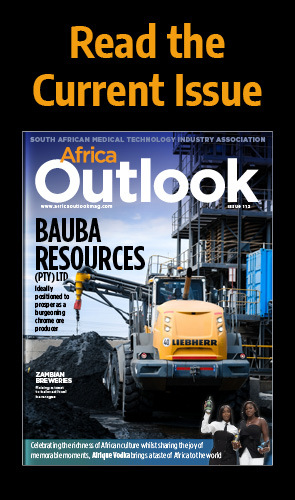Deon Liebenberg, Vice President of Vodafone Africa says that businesses must not innovate for innovations sake, but strategically examine the benefits of opportunities involving technology.
In business – new isn’t always better. New technologies might appear attractive, but they require time and imagination before they realise their full potential. The best business innovations don’t come from innovating for innovation’s sake nor are they always borne out of wild or prolific ideas – they come from strategic thinking and applied process. They come from assessing existing technologies and information across industries and business functions and matching them with core competencies.
Today, many organisations look to new technologies and practices to innovate and future proof themselves to ensure the best chance for success, but little do they realise that the key to innovation is about understanding what they have and using it in new ways. By doing so enterprises can create the right tools to help them better prepare for the future.
FUTURE-PROOFING THE ENTERPRISE
The sheer size and scale of multinational corporations (MNC) can make future-proofing a complex task for companies seeking to enhance flexibility, connectivity and stay relevant in an increasingly competitive market.
More and more enterprises are turning to the cloud, machine-to-machine and mobile technologies, as well as reviewing global communications strategies, to drive innovation and keep pace with the ever-changing business environment. Using these technologies businesses are better placed to capture, access and analyse information to develop meaningful insights and identify opportunities that can drive creativity and profitability throughout the business.
True innovation, however, goes beyond simply being able to access greater volumes of information. It’s about how this information is disseminated and consumed throughout the business. Making sure the right information is accessed by the right people at the right levels is crucial to ensuring the right business decisions can be made based on meaningful and accurate insight.
Something as straight forward as having the right dashboards in place is a simple but effective way of doing this. Although it sounds obvious, many dashboards reflect the complexity of the technologies and information they portray. By refining them and making them more user-friendly, they are able to provide executives with greater and more accurate visibility over a multitude of company activities and costs, such as global device deployment, enterprise wide communications or the latest sales or procurement costs at any time and on any device. All of which makes them better able to understand them and make decisions to drive change within the business.
APPLICATIONS FOR THE ENTERPRISE
Enterprises are also looking to innovate by developing programs and applications that people want to – rather than have to – use. Everyone is familiar with the angry bird craze that swept the world a few years ago. Following that, several other games such as Candy Crush Saga, have followed suit, this time encouraging individuals to compete and engage with each other through a mobile phone app. What if we could develop something similarly engaging that people could use in the enterprise?
Many multinationals have introduced BYOD strategies and have seen the potential it has to increase mobility among employees. The missing piece of the puzzle for many however, is turning this increased mobility into increased collaboration.
The more forward thinking enterprises have already taken steps to address this. For example, some HR departments are currently working on ways to unlock the potential of technologies already used in other industries – working with game developers to create a culture that appeals to and motivates Generation Y end-users.
They are keen to develop something that’s attractive to end-users and prospective new talent encouraging them to interact with each other by sharing content or discussing problems.
Angry birds or candy crush for the enterprise might be slightly overreaching because at the end of the day work and play are two very different things. However – it is achievable. Be it a central resource for sharing ideas or collaborating on issues fostering a community of help and camaraderie then it just might work – it just needs to dangle the right carrot for people to engage with it.
BIG DATA – OBVIOUSLY
Of course no article is complete without a mention of Big Data. Marketers are among the latest departments to innovate by aggregating the information within their mobile networks to extract customer patterns that can fundamentally change how their businesses operate. And again this goes back to having easily consumable dashboards. By using this information they are able to use the network information to identify real-time patterns in people’s movements providing better visibility into real time business needs such as more staff being required to service customers.
Pre-dashboard era, they wouldn’t have known what they were looking at without a data scientist sitting over their shoulder explaining it to them. Now however, anyone can look at their computer screen and make sense of what used to be nothing but a series of inexplicable numbers, lines and code configuration requests. Thus it’s providing the means to simply access and understand this information that is where true innovation lies in this era of hyper consumption.
THINK INSIDE THE BOX
Ultimately, everyone has access to the same technology and uses the same equipment so this in itself won’t be enough to differentiate one enterprise from another. The difference is in what you do with it.
mHealth for example has an enormous contribution to make in overcoming growing health challenges in Southern Africa.
Rural medical clinics in Africa are already using mHealth technology to wirelessly receive HIV test results of expectant mothers within days of testing. This allows expectant mother to begin anti-retroviral treatment much more quickly and decreases the risk of transferring the virus to their unborn babies. mHealth is also being used in the battle against diabetes, a disease which affects over 7.5 million adults in Africa. In this case, regional governments and healthcare organisations are working with hardware manufacturers to make mobile monitoring devices and applications to help with treatment.
In an era where pressures faced by businesses are extreme people often get caught up in trying to find out what new solution will make their lives easier. STOP. Look around and assess your tools to see what’s right under your nose before you start laying out huge costs for new-fangled untried technologies.
Those businesses that are able to look back and understand their past will be much more successful at innovating in the future.





























